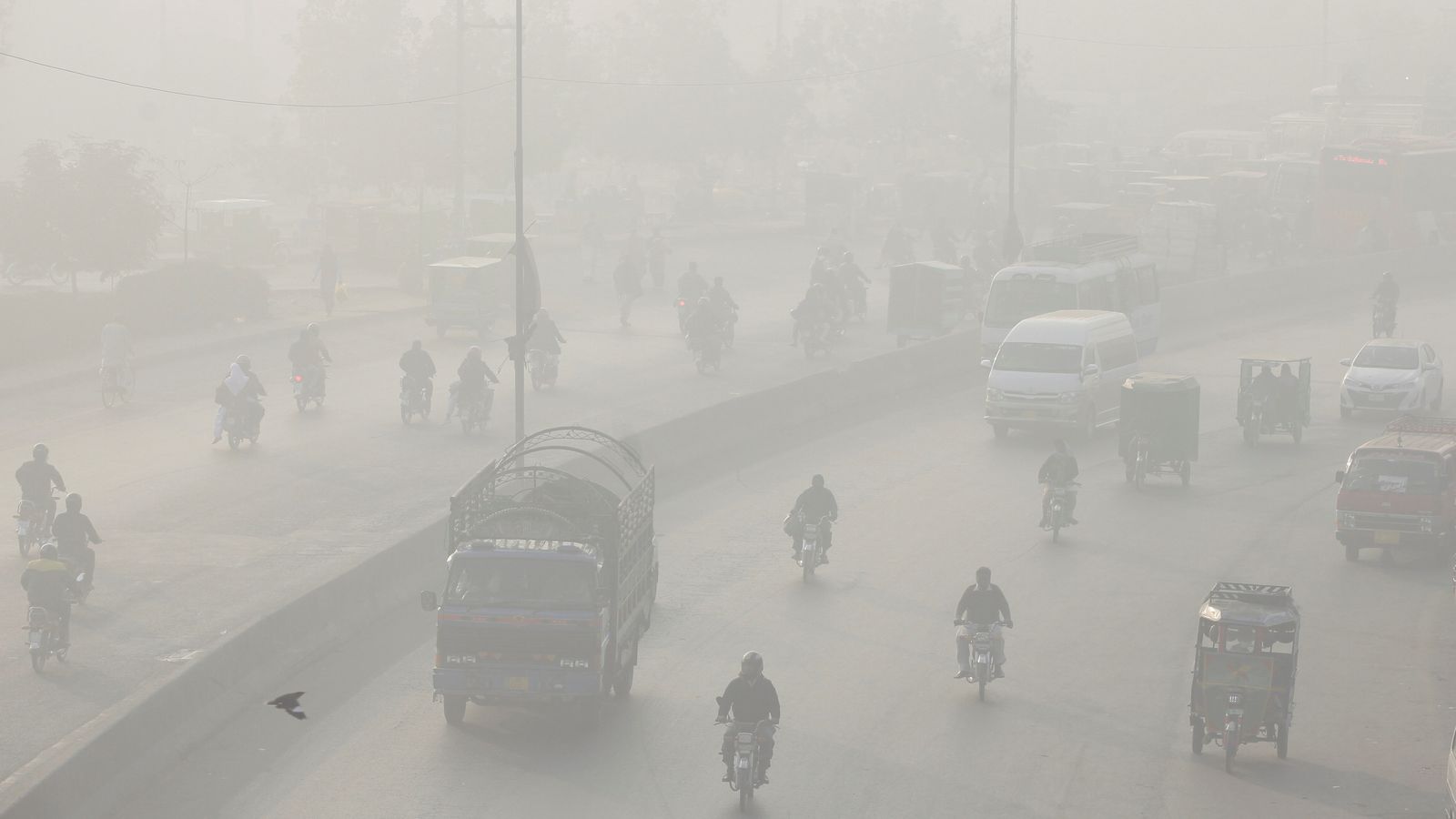Artificial rain has been used for the first time in Pakistan to battle hazardous levels of smog.
Planes equipped with cloud-seeding equipment – which helps clouds form and increases precipitation – flew over areas of Lahore on Saturday.
The megacity in Pakistan’s east is often ranked as one of the worst places in the world for air pollution.
“It drizzled in at least 10 areas of Lahore,” said the caretaker chief minister of Punjab, Mohsin Naqvi, according to Al Jazeera.
He said authorities were monitoring the impact of artificial rain in a 15km (nine mile) radius.
The “gift” of artificial rain was provided by the United Arab Emirates, Mr Naqvi said, adding: “Teams from the UAE, along with two planes, arrived here about 10 to 12 days ago. They used 48 flares to create the rain.”
The UAE has increasingly turned to cloud seeding to create rain in the country’s arid expanse.
The process, also known as artificial rain or blueskying, sees silver iodide, which has a similar structure to ice, sown into clouds to encourage condensation to form as rain.
Experts have said rain is effective in bringing down pollution.
Levels of PM2.5 pollutants – which are microparticles that enter the bloodstream through the lungs and can cause cancer – were measured as hazardous in Lahore on Saturday at more than 66 times the World Health Organisation’s danger limits.
Read more from Sky News:
Carbon offsetting sounds attractive – but it’s an expensive prospect
Just Stop Oil protester jailed for six months for ‘peaceful’ march on major London road
Be the first to get Breaking News
Install the Sky News app for free
Pakistan’s air pollution problem has worsened in recent years as a result of low-grade diesel fumes, smoke from seasonal crop burnings and colder winter temperatures.
Mr Naqvi said there would be more use of artificial rain in the city, as well as the installation of smog towers, which are designed to capture pollution.





